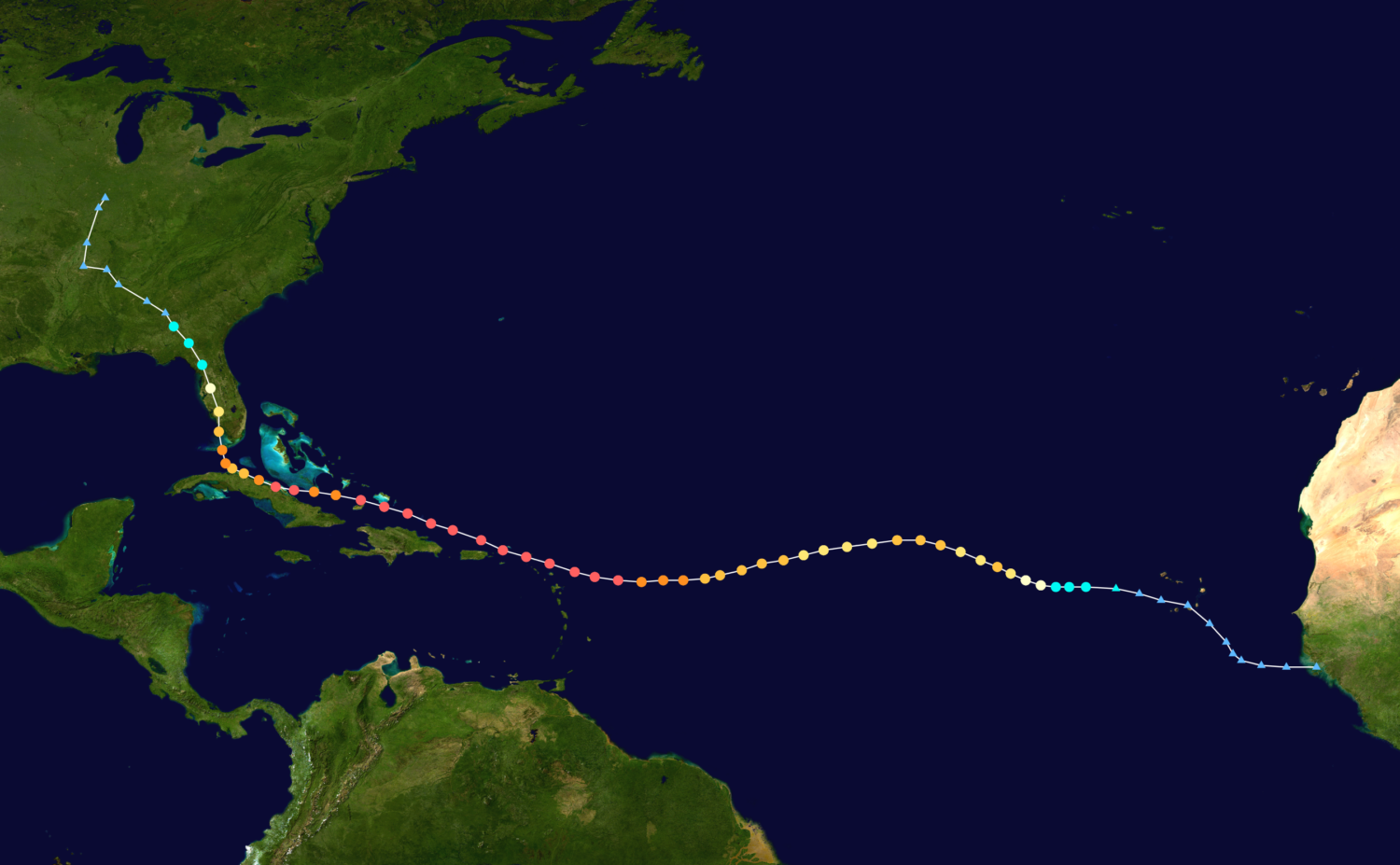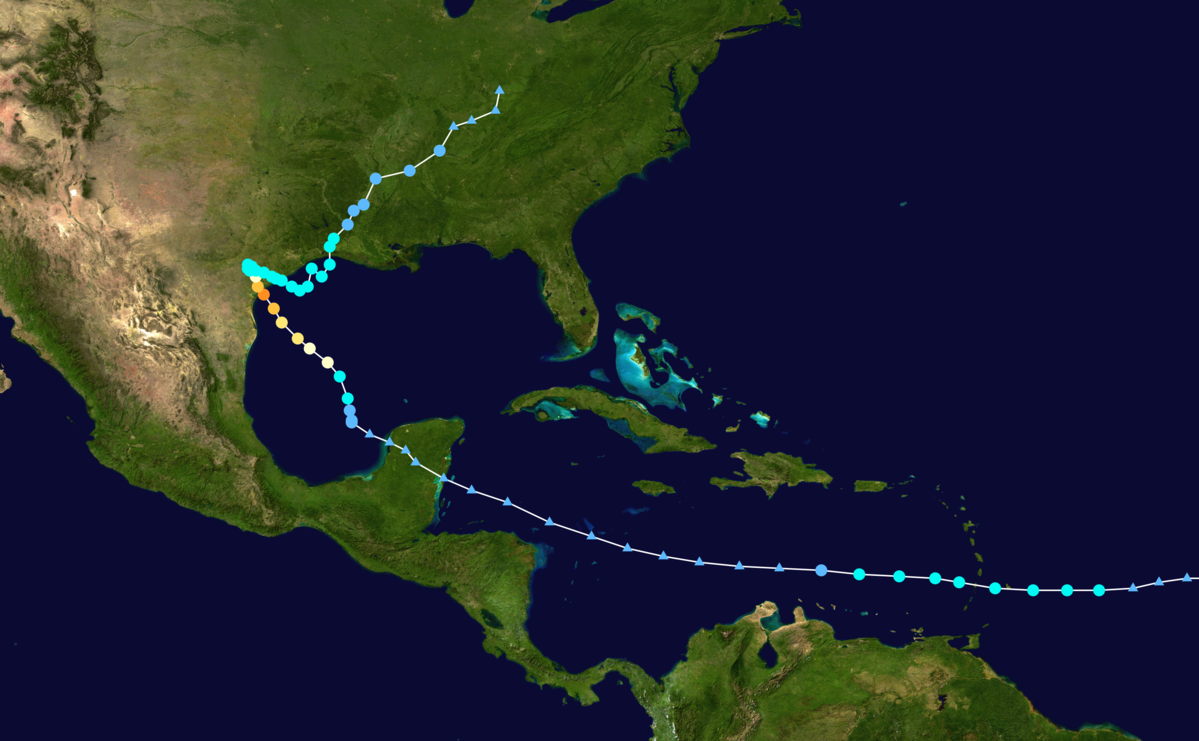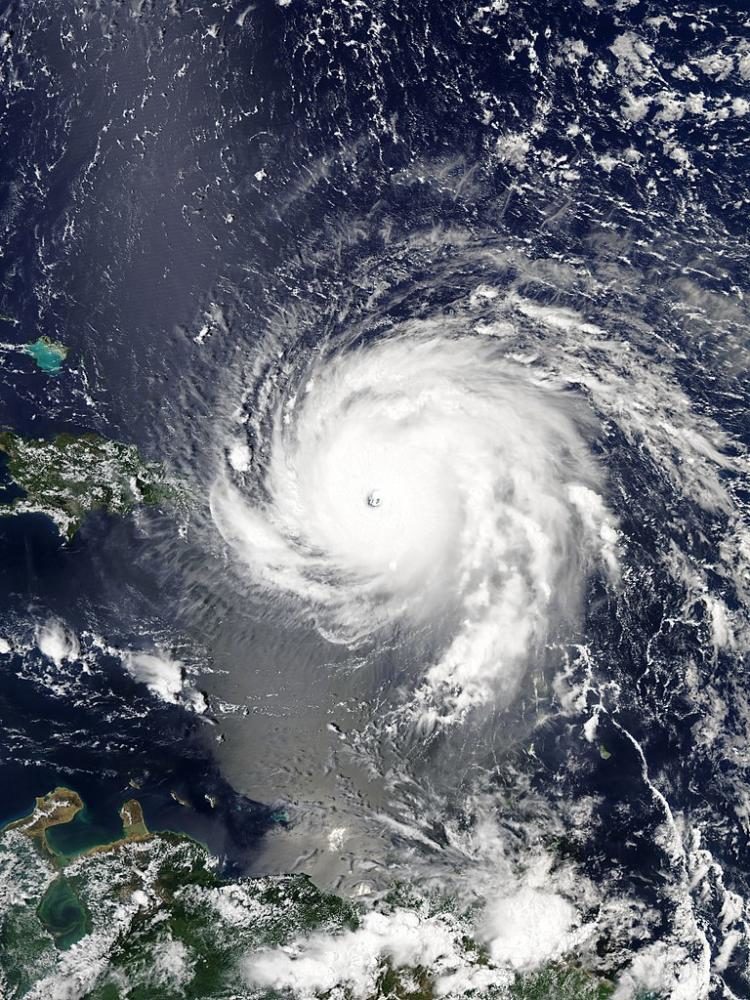Hurricanes and You
An aerial view of Hurricane Irma at its peak strength over the Virgin Islands. Image taken by NASA and used under the Public Domain. Photo via Wikimedia Commons under the Creative Commons License. https://commons.wikimedia.org/wiki/File:Hurricane_daniel_2006.jpg
There they are, spinning and spinning as they approach the coast. When they hit the sandy beaches of the US, chaos and terror ensues, and the dark clouds cover up the sky as an army of rain pelts down. Hurricanes have historically been some of the most powerful storms that we experience here on Earth, and this hurricane season has been no exception. With Hurricane Harvey and Irma both in the span of weeks, Puerto Rico and the southern part of the United States are definitely hurting. While you may not live in one of the areas directly affected by the hurricanes, you will not be walking away unscathed.
From an energy standpoint, these past few weeks have been a disaster. When Hurricane Harvey hit Texas, over 12 oil refineries in the oil capital of the country went offline. The Port Arthur refinery, the U.S.’s largest refinery and the world’s 8th largest refinery, was forced to shut down due to Harvey. It stayed offline for over a week, costing over 7.8 million barrels of oil production. The refinery was able to start working at 40 percent capacity on September 11, almost 13 days after it was shut down on August 30. Motiva, the company that owns the refinery, has not released a timeline of when the refinery will be fully restored. It will continue to run at 40 percent for the time being. As of September 18, the refinery has seen over 10.3 million barrels of lost oil production. This is just one refinery. Across the affected areas of Texas, the US can expect to see over 60 million barrels of lost oil production. Many of these refineries will not be online for a while as many have suffered extensive damage. This is going to cause gas prices to go up. Nationally, gas prices have gone up 15 percent, a two-year high. People in the Colorado Springs area have seen a 50-cent bump per gallon in gas prices. Diesel prices in the area have stayed relatively stagnant but may go up as well.


The whole economics of the hurricanes is also a major problem for the US. Hurricane Harvey caused over $180 billion in damage. Harvey damaged over 200,000 homes and destroyed more than 12,000. Over 1,000,000 vehicles are considered a total loss. Federal entities were able to rescue more than 10,000 people and the Houston Police Department saved over 3,000 people in just 4 days. While these statistics are staggering, all of it costs money. Keep in mind that those statistics only apply to Harvey, not Irma. The damage caused by Irma is still a little shaky, but FEMA is looking at over $100 billion in damage. Along with the expensive price tags, a large part of Texas and pretty much all of Florida were shut down during their respective hurricanes. This means that nobody was going to work or earning money. This halt in the economy will have widespread effects for the next few months as people try to return to the status quo. The amount of money lost in those times is unsure, but given that DisneyWorld alone makes over $36 million a day, it is safe to say that a large amount of wealth was lost. In order to help pay for all of this damage and disaster relief, the Trump administration agreed to raise the debt ceiling, the amount of money the U.S. government is allowed to borrow. The U.S. debt then rose to over $20 trillion for the first time ever. This will increase the country’s deficit, and all of this debt will eventually fall upon to you, the citizen.
While there is economic and statistical damage, there is also a human aspect to every disaster. Hurricane Harvey killed 75 people in the U.S., and the current death toll of Irma is 42 and expected to grow. People all around the nation know someone who was affected by at least one of the hurricanes including many Kadets.
Johnny Gilbert, a sophomore at Air Academy, has many friends who live in Florida and who were affected by Hurricane Irma. His friend, Eley, lives in West Palm Beach which is just north of Miami. West Palm Beach was just brushed by the Hurricane, but it still felt the effects. Eley had to stay in a hospital for 2 to 3 days for shelter from the storm. When he left the hospital, he saw numerous downed trees and power lines with electric cables sprawled across the streets and into canals. He went about a week without power until power companies all the way from North Carolina came to help restore power. During that time, Eley reports that the canals were really flooded, which made it hard for electrical engineers to pull the electric cables out of the water and restore power. Eley’s house was not damaged, fortunately, but there is plenty of debris spread out across the city. Crews in the area say that it could take up to 3 months to clean up all of the debris, even with over 400 trucks throughout the city helping with the cleanup effort. Like Johnny, many other Kadets know somebody who was affected by these hurricanes—some worse than others.
While the hurricanes are far away from Air Academy, most of us are touched economically or emotionally by these destructive and powerful storms.

Hi, my name is Jake Werner and this is my staff profile. I am a Copy Editor, the Fun Facts editor, and the editor of the Jetcast and this is my second...








